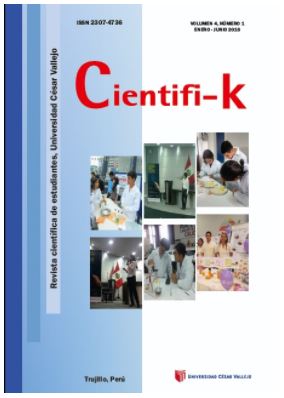Elimination of escherichia coli in sewage sludge by drying sun
Keywords:
Sewage sludge, Dryer Sun, Escherichia coliAbstract
This research describes the performance of a solar dryer, with regard to the elimination of pathogenic bacteria contained in slurry, coming from the main "Inka Golden" plant wastewater treatment, a great ecological, social, and technological problems due to their poor management, processing and final disposition. Different gastrointestinal diseases may occur by the dispersion of pathogens caused by the action of the wind and vectors. The use of the solar drying technologies is a technologically feasible and economic alternative for the removal of high content of pathogenic microorganisms. To contribute to the solution of this problem, "Inka Golden" wastewater treatment plant sludges were processed in a solar dryer in order to find better mechanisms of management and disposal. Variables such as humidity, temperature, pH, and radiation proved to be important factors for the growth and survival of bacteria. A drying of the exponential type behavior was observed, to the 2 days out of the range of cultivation begin to count colonies (Escherichia coli) present on each plate, an initial concentration in wet mud.
Downloads
Published
How to Cite
Issue
Section
License

This work is licensed under a Creative Commons Attribution-NonCommercial 4.0 International License.










